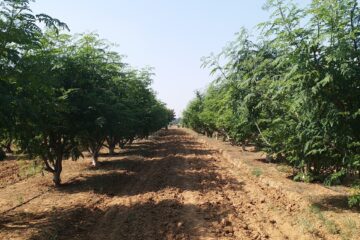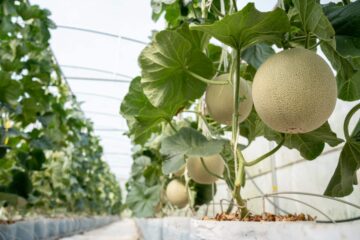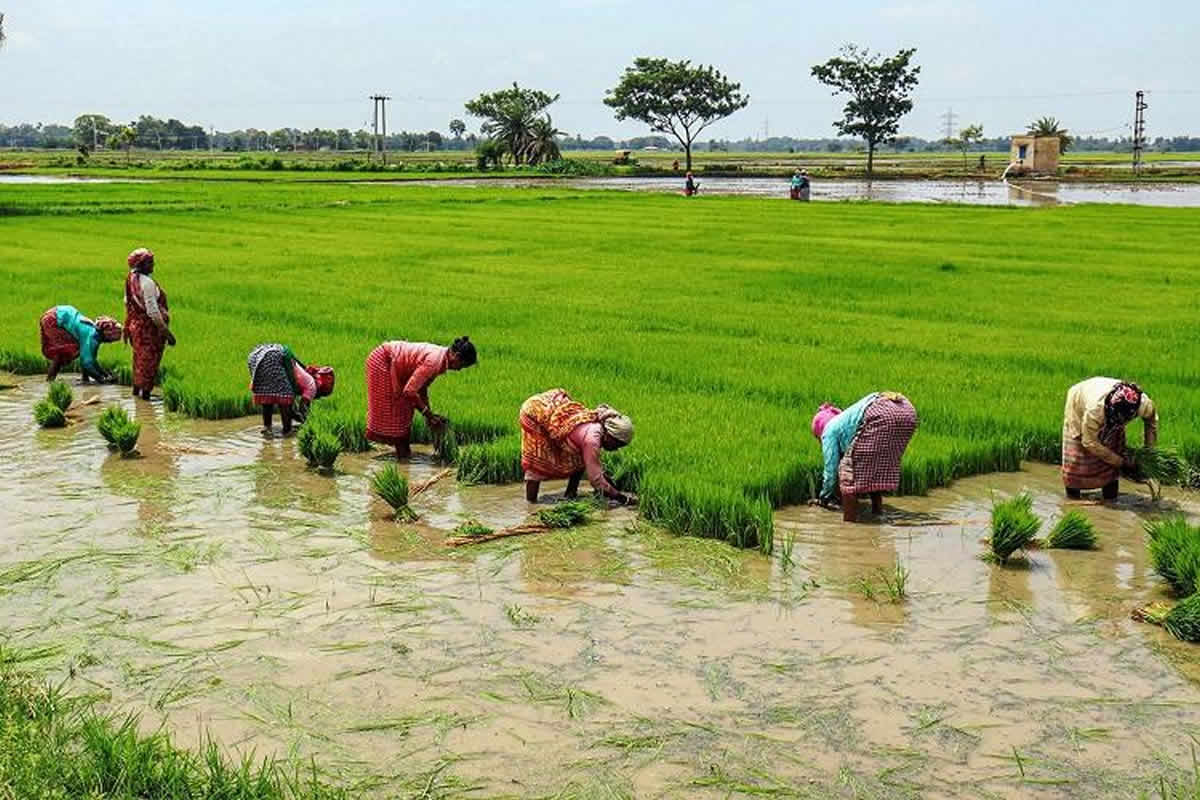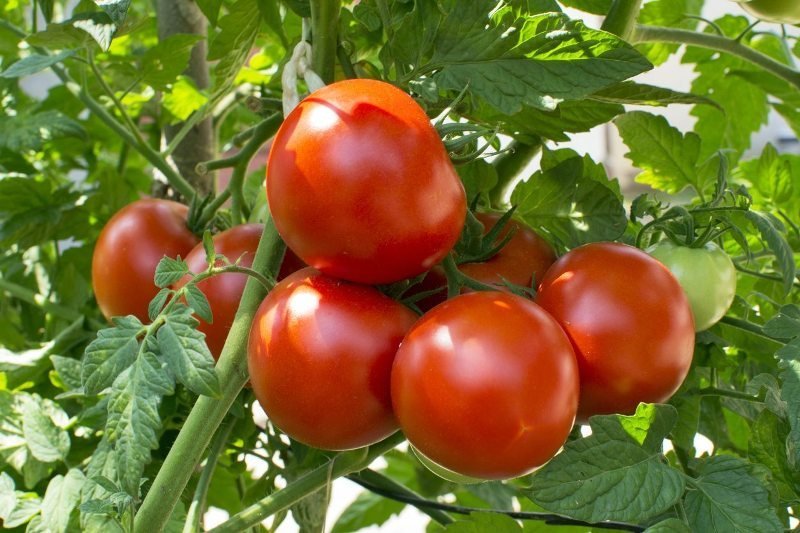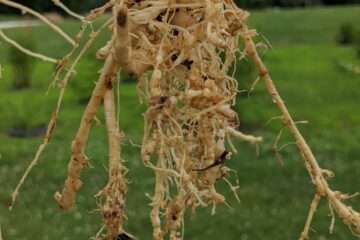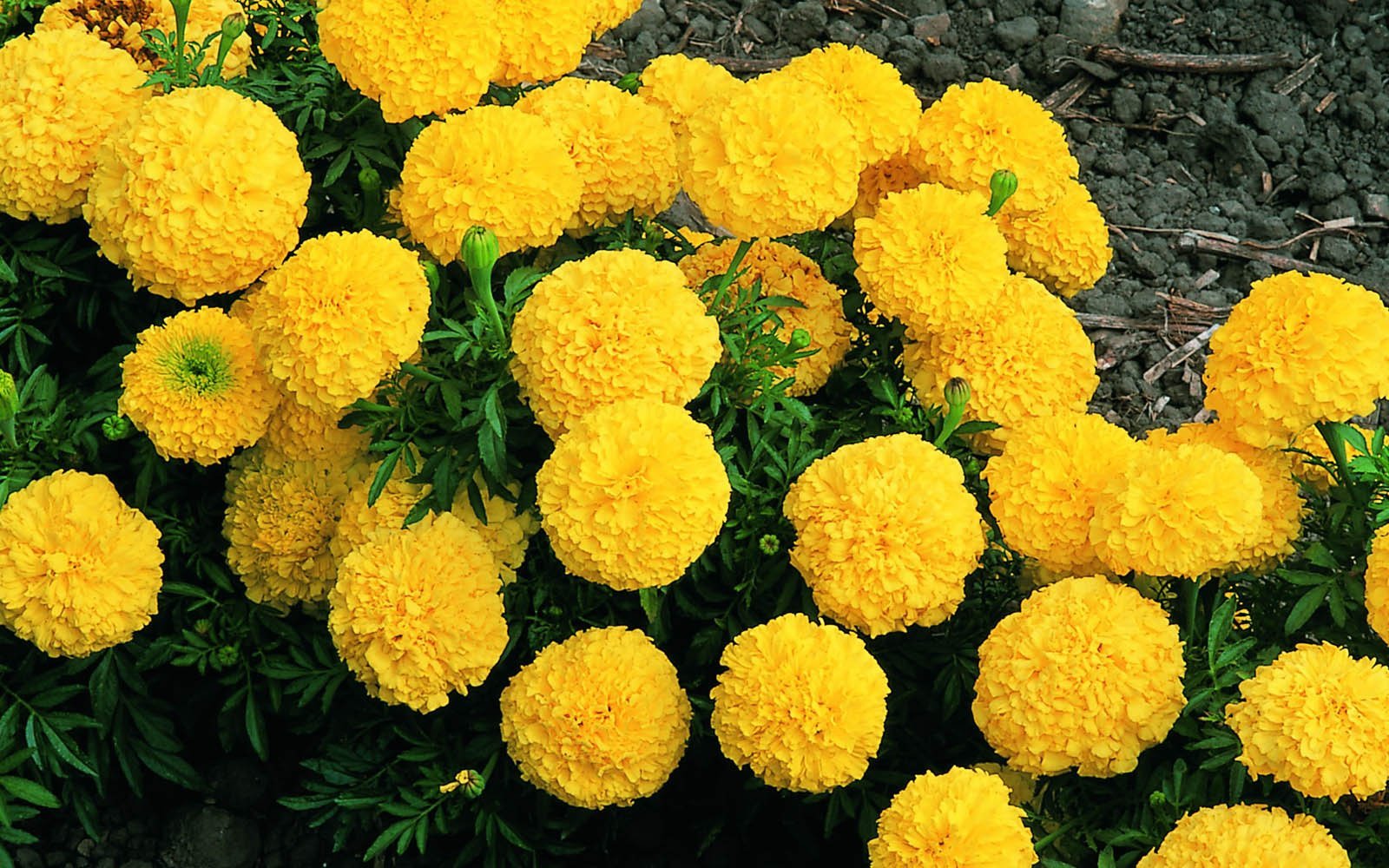Typically, sugarcane planting involves placing furrows at 3-4 feet intervals. However, farmers may adopt specialized planting techniques depending on the land. Below are the various methods used:
Planting Methods
- Furrow Planting
- Flatbed Planting
- Slant or Tilted Planting
- Deep Trench Planting
- Pit Planting
- Transplanting Seedlings
- Paired Row Planting
- Mechanical Planting
Furrow Planting
In regions with clay, loamy, and lightly silted soils, furrow planting is common. After plowing the field with a tractor or plow, furrows are made at 3, 4, or 5-foot intervals. At a depth of 5 cm, the sugarcane stalks are placed horizontally or vertically along the furrows. The length of furrows varies from 5 to 15 meters, making irrigation easier and improving airflow between plants, benefiting crop growth. This method is widely used by most sugarcane farmers.
Flatbed Planting
Flatbed planting is often used in areas with silty soil. After paddy is harvested, sugarcane is planted in moist fields at 3-foot intervals. Once the cane starts sprouting, fertilizer is applied, and soil is mounded around the plants to keep them upright. After 3-4 months, this method becomes similar to furrow planting.
Slant or Tilted Planting
In this method, sugarcane stalks are placed at an angle, resembling Napier grass planting. With some nodes buried and others above the soil, this technique allows plants to sprout even if submerged nodes rot due to excessive moisture. Once the soil begins drying, stalks are pressed into the ground to support sprouting.
Deep Trench Planting
Used in Trichy and Thanjavur districts, this technique is well-suited for areas irrigated by canals. Trenches 30 cm deep and 60 cm wide are dug at 3-foot intervals, with two rows of sugarcane planted along the trench. Over time, the trenches transform into raised beds, functioning as effective drainage channels and supporting crop resilience.
Pit Planting
Instead of furrows, pits are dug at 5×5-foot intervals and about 1.25 feet deep, allowing up to 4,444 pits per hectare. Each pit is irrigated using drip irrigation before planting, which boosts sprouting. The pit is then filled with sand, clay, and compost. Cane stalks are planted around the edge of the pit, improving water and fertilizer efficiency.
Benefits of Pit Planting
- Ideal for drip irrigation.
- Water and fertilizer conservation.
- Reduced weed growth.
- High yield in both primary and ratoon crops.
- Suitable for saline soils.
Transplanting Seedlings
Seedling transplantation can be done in four ways:
- Polythene Seedling Transplantation – Stalks are planted in polythene bags, sprouting in a shaded area until they are ready for transplantation.
- Direct Single Node Planting – Nodes are directly sown into beds with 30 cm spacing between plants.
- Single Node Transplantation – Nodes sprouted in beds are later transferred to furrows with 1-foot spacing.
- Setts Transplantation – Sprouting nodes are carefully transplanted into small trays filled with organic material, then planted after 25 days.
Paired Row Planting
Developed by Tamil Nadu Agricultural University, paired row planting enables efficient drip irrigation. Furrows are dug 120 cm apart with two rows 25 cm wide, separated by a drip line, saving water and reducing weed growth. Paired rows make machine cultivation and harvesting easier.
Mechanical Planting
Due to labor shortages, sugarcane cultivation is increasingly mechanized. With mechanical planting, only 10 laborers are needed per acre. A tractor-mounted planting device cuts and plants full stalks into furrows, simultaneously applying fertilizer. Mechanical planting can cover up to three acres per day.
Dr. M. Shanmuganathan, Associate Professor, Crop Breeding Department, Agricultural College and Research Station, Kudumiyanmalai, Pudukkottai District.



